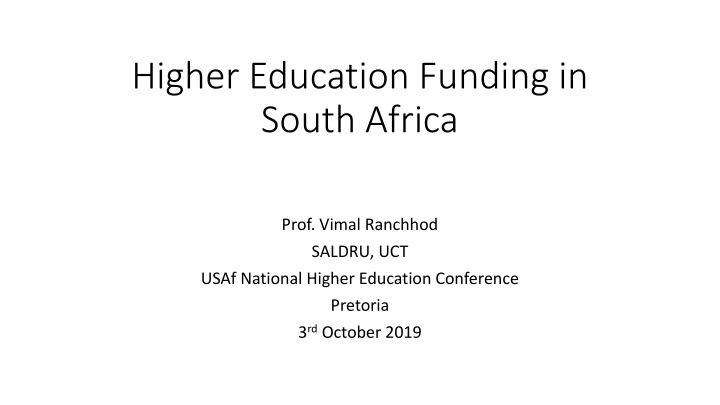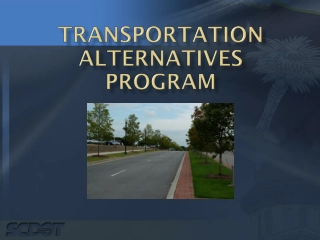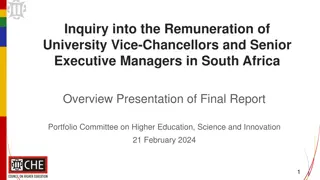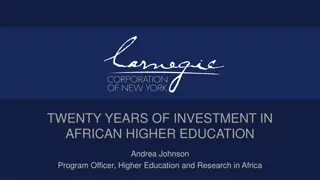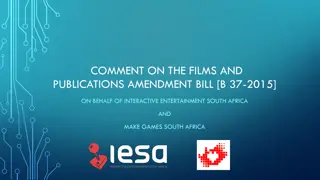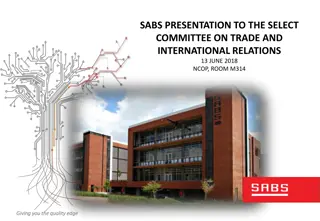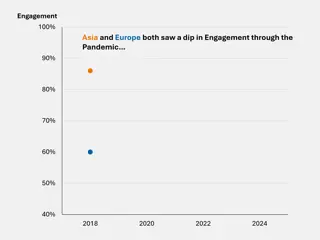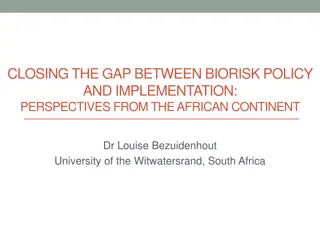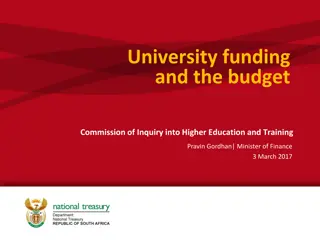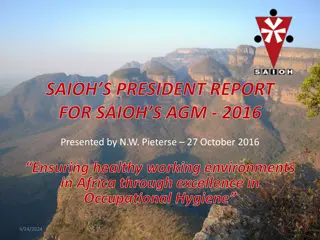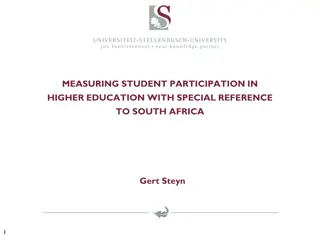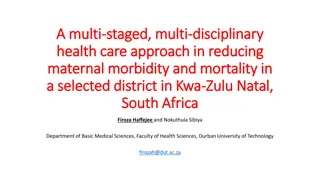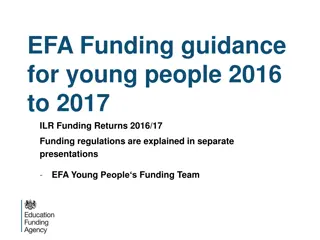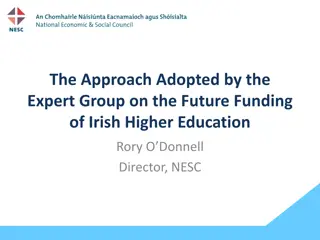Higher Education Funding Trends in South Africa
This presentation discusses the levels and trends of higher education funding in South Africa, focusing on public universities. It covers key sources of funding, historical expenditure trends, and important features of the institutional landscape.
Download Presentation

Please find below an Image/Link to download the presentation.
The content on the website is provided AS IS for your information and personal use only. It may not be sold, licensed, or shared on other websites without obtaining consent from the author.If you encounter any issues during the download, it is possible that the publisher has removed the file from their server.
You are allowed to download the files provided on this website for personal or commercial use, subject to the condition that they are used lawfully. All files are the property of their respective owners.
The content on the website is provided AS IS for your information and personal use only. It may not be sold, licensed, or shared on other websites without obtaining consent from the author.
E N D
Presentation Transcript
Higher Education Funding in South Africa Prof. Vimal Ranchhod SALDRU, UCT USAf National Higher Education Conference Pretoria 3rdOctober 2019
Outline Introduction Conceptual framework Data from National Budget Data from DHET Overall picture: Sector level A puzzle Concluding points
Introduction Working on this as part of an ongoing USAf project to determine the cost of producing an undergraduate-level graduate, by university and degree type in SA. Objective for this talk: To provide an overview of the levels and trends of Higher Education Funding in SA, specifically focussed on public universities. To highlight any salient features or new developments. To reflect on what the findings to date imply for: Policy. Subsequent research.
Institutional landscape South Africa has 26 public universities: 12 Traditional Grants academic degrees. 8 Universities of Technology Grants technical/vocational degrees. 6 Comprehensive Has both academic and technical programs. Public universities are autonomous non-profit organizations that report to the Department of Higher Educational and Training (DHET). Universities bear responsibility to maintain financial sustainability.
How are public universities funded? Largest source of funding come from government. SARS National Treasury DHET Individual Universities. DHET provides support through different funding mechanisms: Infrastructure grants Block grants based on inputs, e.g. enrolments. Block grants based on outputs, e.g. # of graduates, MA & PhD dissertations. Research subsidy for accredited publications. Student Fees: Universities have autonomy to set their own fees, generally to make up any deficit in operating costs. Primary mechanism for maintaining a balanced budget. Third stream income: Grants, endowments, donations, investment income.
Trends in historical and projected Expenditure on Universities: Source: National Budget 2019 Year University Education 32 898,6 2015/16 2015/16-2018/19 21,7% 39 515,7 2016/17 Annual growth 41 929,1 61,9% 2017/18 % of total DHET budget 59 254,0 2018/19 73 409,9 2019/20 2018/19 2021/22 12,8% 80 660,1 2020/21 Annual growth 85 097,1 67,1% 2021/22 % of total DHET budget Units: Millions ZAR (nominal)
A few points to note Funding to university sector has grown, and is projected to grow, well above CPI inflation. (approximately 5 percentage points per annum). University sector accounts for over 60% of DHET expenditures, and is forecast to climb to over two-thirds in the next 3-year cycle. The aggregated line item is a bit misleading, as it conflates growth in subsidies to universities with growth in NSFAS. Huge increase in budget allocated to NSFAS following revised eligibility criteria. (Family income up to R350k/annum). The magnitude of this increase is almost surely going to affect the industry. Nonetheless, the subsidy to HEIs is also growing substantially above CPI.
Trends in historical and projected Expenditure by category: Source: National Budget 2019 (R Millions) Year Subsidies: HEIs NSFAS 26 297 6 448 2015/16 2015/16-2018/19 Subsidy NSFAS 27 964 11 392 13,7% 46,6% 2016/17 Annual growth 31 580 10 143 57,5% 22,3% 2017/18 % of total DHET budget 38 662 20 334 2018/19 42 306 30 822 2019/20 2018/19 - 2021/22 Subsidy NSFAS 45 064 35 314 7,1% 22,4% 2020/21 Annual growth 47 542 37 256 47,5% 33,8% 2021/22 % of total DHET budget
Institution level data Original data from DHET, compiled by Charles Sheppard. Downloaded from Centre for Higher Education Transformation (CHET). Open-access to public! Data from 2009 2016. Amazing amount of information, for HEIs collectively and by individual institution, on: Incomes and Expenditures Student #s, by race, by gender, by major field of study # of graduates by degree type and major field of study Research outputs Sources of income Academic Staff #s, by Rank, by race, by gender, by qualification
Proportion of total income from various sources year govt fees pvt 2009 0,39 0,29 0,31 2010 0,41 0,30 0,30 2011 0,42 0,31 0,27 2012 0,40 0,31 0,29 2013 0,40 0,33 0,27 2014 0,38 0,33 0,28 2015 0,39 0,35 0,26 2016 0,40 0,33 0,27
A puzzle Both the levels of income and expenditures were increasing sharply between 2009 2016. How can we understand this? Universities set fees, so increased revenues might be explained by increased expenditures. i.e. What is driving the increase in expenditures? Could it be the sustained growth in enrolments?
The puzzle continues Could it be due to the sustained increase in enrolments? Partly, but not sufficiently Between 2009 2016, Total Income and Expenditure of the whole group increased by 88% and 98% respectively. But Student FTE enrolments increased by only about 20%.
Student to Staff ratio (FTE) 26,6 27,3 27,0 26,3 27,4 26,9 26,3 25,5 Academic FTEs 21421 21968 23274 24089 24282 24806 25814 26894 year 2009 2010 2011 2012 2013 2014 2015 2016 Students FTE 569706 600002 628410 634549 665857 666946 678842 685297
What happened to staff numbers? Increase in FTE academic staff from 21421 in 2009, to 26894 in 2016. This is an increase of 25.5%, which is slightly above the increase in FTE students (of approx. 20%), but not dramatically so. How much was CPI inflation over this time period? CPI inflation was about 44% between June 2009 and June 2016. Together, the CPI inflation combined with increased staff numbers would generate about an 82% increase in staffing costs.
Expenditure Personnel Costs Academic FTE year Value (mln) Share Value (mln) Number 2009 33282,6 0,51 16974,10305 21421 2010 37174,5 0,49 18215,51921 21968 2011 40180,9 0,49 19688,63267 23274 2012 45817,6 0,54 24741,4932 24089 2013 49170,4 0,54 26552,00682 24282 2014 54205,2 0,53 28728,77243 24806 2015 58709,6 0,54 31703,18562 25814 2016 65929,2 0,53 34942,4495 26894
Conclusion Income and expenditure went up significantly between 2009 2016. Disproportionately generated by increased fees. Rate of increase in # of academic FTE > Rate of increase in # of student FTE. Increase in expenditure cannot be fully explained by more bodies or by CPI inflation. A caveat needs to be stated that personnel costs can be due to academics, but might also be due to non-academic personnel. A likely (but not certain) implication would be that academics received above inflation increases in remuneration over this period. Corroborated by evidence in SA and globally on increased rewards for highly skilled people in the labour market.
